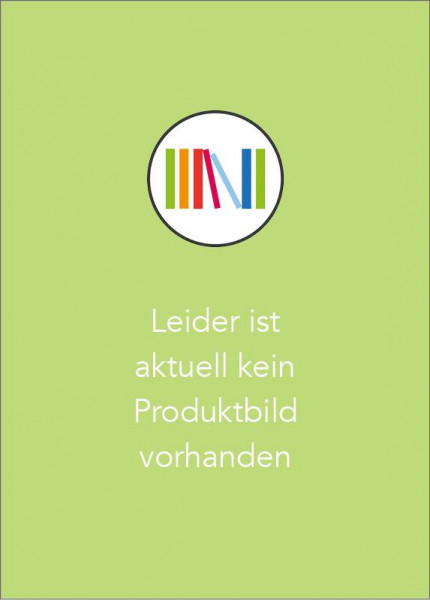
Rosia Montana: Social Representations around an Environmental Controversy in Romania
Kurzinformation
inkl. MwSt. Versandinformationen
Artikel zZt. nicht lieferbar
Artikel zZt. nicht lieferbar

Beschreibung
The Romanian village Rosia Montana is said to be the site of Europe's largest gold and silver deposits. Plans to extract these precious metals were launched in the late nineties by the Rosia Montana Gold Corporation, a joint venture between a Canadian-based mining company and the Romanian State. The Rosia Montana Project met with strong opposition from various social players who coalesced in the 'Save Rosia Montana' movement, thus generating a long-lasting controversy that exceeded local boundaries and making Rosia Montana internationally renowned. So far, neither the supporters nor the opponents have succeeded to impose their will and determine the start or the annulment of the mining project in Rosia Montana, making the future of Rosia Montana uncertain. The ongoing conflict over Rosia Montana is, in many respects, a unique phenomenon that marks an important part of Romania's recent democratic history. This book proposes a social psychological analysis of this phenomenon, by focusing on the social representations emerged in Romanian society due to this conflict. In analyzing social dynamics, the conflict between groups is interpreted in terms of a conflict between social representations. At the same time, the research presented here aims contributing to social representation theory, by broadening knowledge about polemic social representations. Contrary to hegemonic and emancipated representations, polemic social representations are generated in the course of social conflict and are not shared by the whole society. For studying polemic social representations in a real setting, the Rosia Montana affair proved indeed to be a 'gold mine'. This book focuses on the comparative study of the representations emerged in Romanian society due to this conflict, both in the media and in people's minds. The first part of our empirical analysis, dedicated to media analysis, consists of three studies. The first two strongly inter-related studies focused on the social representations constructed and transmitted by the main antagonisers involved in the conflict, whose goals related to the future of Rosia Montana are deeply incompatible. In our first study, using qualitative methods, we analyzed the symbolic competition in which the two conflicting sides were engaged, by making a 'biography' of the polemic social representations they fabricated and transmitted through the media with a view to influence the public and the decision makers to adopt a favorable position to the cause they are supporting. A closer look at the controversy in a historically chronological manner made us see that polemic social representations, albeit mutually exclusive, emerge and evolve in inter-dependent relationships. These polemic 'forms of truth' projected by both parties have been intertwined and have been mutually transforming each other since the corporation announced its project sixteen years ago. The second study presents the results of an exploratory comparative analysis of the definitions of Rosia Montana as a place. By focusing on the iconic code of expression of social representations, we were interested in observing the way in which the "reality" of Rosia Montana was objectified through visual images about this place by the two sides involved in the conflict: the mining company and the 'Save Rosia Montana campaign'. For this purpose, we chose to analyze two sets of photographs about Rosia Montana, which circulated on the Internet in 2007. The analysis revealed the emergence of two pictorial representations about Rosia Montana, which are highly contrasting and stereotypical. Ten of the photographs analyzed in this study were further used as stimuli in our last study. The main purpose in the third study was to comparatively examine how the Rosia Montana affair was covered by the Romanian written media since the beginning of the controversy. A corpus built of 916 newspaper articles, published on the Rosia Montana issue in five newspapers (three national, two local) was examined using the various methodological tools offered by the software Tlab. Automatic text analysis allowed us to identify the dominant frames through which the Rosia Montana issue was addressed, as well as to examine the dynamics in the media representations of the Rosia Montana issue in each newspaper. Results also showed differences in the statistical relevance of each frame in the five newspapers included in the analysis. Lastly, we investigated the representational system occurring in people's minds with regard to the Rosia Montana issue. Data for this study was obtained through an on-line questionnaire that combined both projective and verbal structured techniques. The focus on the content and structure of the social representations of 'Rosia Montana', 'Gold mining', 'Environment', and 'Foreign investors' aimed to identify whether these social objects generated different and polemic representational systems for the groups of subjects (N=276) compared in this study (Opponents, Supporters, Undecided). The corroborated results of the complementary analyses (hierarchical associations analysis, correspondence analysis, cluster analysis) carried out on the corpus of terms elicited from the free associations to the four stimulus words showed the existence of two different social representations of Rosia Montana that are highly polemic. Furthermore, the results showed important connections between the social representations of Rosia Montana and of gold mining and foreign investors, different across the three groups, depending mainly on the three psychological dimensions measured (environmental concern, personal involvement, agentic disposition). In contrast, no connection could be identified with the social representation of the environment, giving us an important clue that this representation might be considered hegemonic and that it does not belong to the same representational systems as the others. Through this study, we also identified the main reasons expressed by subjects for opposing or supporting the construction of a mine in Rosia Montana, the differences existing between the three groups with regard to the attribution of responsibility in decision making about the Rosia Montana issue, as well as information about their meta-knowledge. When using photographs from our second study as stimuli, we found that supporters and opponents did not significantly differ with regard to the preferred pictorial representation of the place Rosia Montana. All subjects judged as more representative the images that emphasized the natural beauty and the heritage values of the place. This result, which may seem to contradict our previous findings, was interpreted in terms of differences between social representations and the context, of figurative texture, in which they are anchored.
Produktdetails

So garantieren wir Dir zu jeder Zeit Premiumqualität.
Über den Autor

- paperback
- 352 Seiten
- Erschienen 2003
- Random House UK Ltd

- paperback
- 184 Seiten
- Erschienen 2021
- Einaudi

- hardcover
- 256 Seiten
- Erschienen 2024
- Heyn

- hardcover
- 48 Seiten
- Erschienen 2020
- Maria Daniela Hästö

- hardcover
- 128 Seiten
- Residenz

- Gebunden
- 492 Seiten
- Erschienen 2022
- Kiepenheuer&Witsch

- hardcover
- 314 Seiten
- Erschienen 2025
- Verlagshaus Schlosser

- hardcover
- 440 Seiten
- Erschienen 2025
- Kremayr & Scheriau

- paperback
- 416 Seiten
- Erschienen 2010
- Berkley

- Leinen
- 240 Seiten
- Erschienen 2018
- Brandstätter Verlag

- perfect
- 256 Seiten
- Erschienen 2025
- Gmeiner-Verlag

- paperback
- 430 Seiten
- Erschienen 2021
- Fazi

- paperback
- 224 Seiten
- Erschienen 2022
- Sternberg Press

- paperback
- 164 Seiten
- Erschienen 2001
- Athesia-Tappeiner Verlag
































